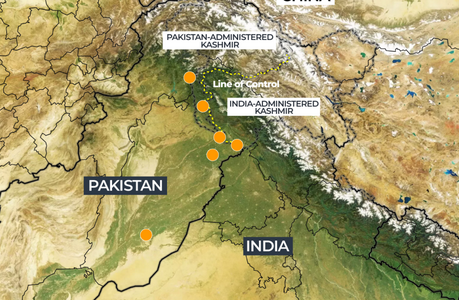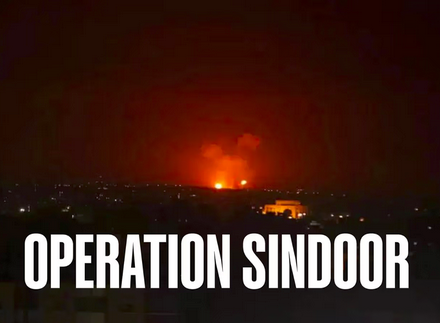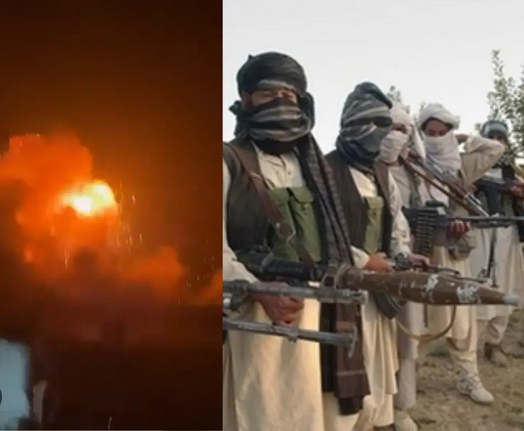Some stories grip you by the throat and don’t let go. Operation Sindoor is one of those—a tale of grit, shadows, and a nation’s unyielding spirit. It’s not just about soldiers crossing borders or bombs lighting up the night. It’s about why they did it, how they pulled it off, and what it means for a world teetering on the edge of chaos. Let’s dive into the heart of this operation, piece by jagged piece, and see what makes it tick.
A Spark in the Valley
Picture this: the quiet of Pahalgam, Kashmir’s emerald jewel, shattered by screams. A terrorist attack, brutal and calculated, rips through the valley. Families torn apart, blood staining the snow. The culprits? Not ghosts, but men trained in camps across the border, nestled in the rugged folds of Pakistan-occupied Kashmir. India grieves, but grief alone doesn’t cut it. The people want justice. The government knows it.
Enter Operation Sindoor. The name’s no accident—sindoor, that red powder women wear for strength, for protection. It’s a nod to tradition, but also a promise: we’ll hit back, and we’ll hit hard. This wasn’t a knee-jerk reaction, mind you. It was months—maybe years—of whispers in dark rooms, maps pinned with red dots, and sleepless nights for those who guard the nation’s soul.

The Plan That Wasn’t Just a Plan
If you think planning a dinner party’s tough, try orchestrating a cross-border strike. The Indian Armed Forces didn’t just wake up and decide to storm nine terrorist camps. This was a symphony of brains and brawn. The Research and Analysis Wing, those shadowy folks who see what others don’t, pieced together the puzzle. Satellite images, grainy but damning. Phone calls intercepted in the dead of night. A traitor’s whisper here, a drone’s hum there.
They knew where the camps were—down to the last barbed wire. But knowing’s only half the battle. The other half? Making sure the world doesn’t explode when you act. The National Security Advisor, a man whose name you’d forget but whose work you’ll remember, sat with generals and spooks, plotting a strike that’d be sharp as a scalpel. No mess, no fuss, just results.
The tech was something else. Drones buzzing like angry bees, feeding live feeds to command centers. Night-vision goggles turning darkness into day. And the weapons—oh, the weapons. Missiles that could kiss a target from miles away, leaving nothing but ash. This wasn’t your grandpa’s war. This was India flexing its future.
The Night That Changed Everything
Now, let’s talk about the night itself. Twenty-five minutes. That’s all it took. Twenty-five minutes to rewrite the rules of revenge. Under a moonless sky, choppers roared low, carrying men with fire in their veins. Para Special Forces, Garud Commandos—names that sound like myths but belong to real heroes. They dropped into enemy territory, silent as ghosts, and turned nine terrorist camps into rubble.
The numbers tell a story: seventy terrorists dead, their dreams of chaos snuffed out. Zero Indian casualties. Zero. That’s not luck; that’s skill. The Air Force played its part, too, with jets screaming overhead, dropping precision bombs that hit like a poet’s pen—exact, deliberate. Armed drones, those cold-eyed machines, mopped up what the boots didn’t.
And the women. Let’s not skip them. Wing Commander Vyomika Singh, her voice steady as she briefed the nation. Colonel Sophia Qureshi, her eyes sharp as the orders she gave. They weren’t just there; they were leading. In a world that loves its stereotypes, these women smashed them, proving India’s military isn’t just muscle—it’s mind, heart, and soul.

The Tech That Tipped the Scales
If Operation Sindoor was a painting, technology was the brush. Forget Hollywood’s CGI nonsense—this was real. UAVs, sleek and silent, hovered like hawks, beaming crystal-clear images to commanders sipping chai in bunkers. Thermal scopes cut through the night, spotting a terrorist’s heartbeat from a mile away. Electronic jammers turned enemy radios into useless bricks.
The Air Force’s standoff weapons were the real stars. Imagine firing a missile from so far you’re practically in another zip code, and it still hits a window dead-center. That’s what India brought to the table. It wasn’t just about blowing things up; it was about doing it clean, leaving no trace but the message: don’t mess with us.
The World Watches, and Whispers
You don’t pull off something like this and expect the world to stay quiet. Operation Sindoor was a geopolitical earthquake. India stood tall, saying, “We don’t negotiate with terrorists.” But the neighbors? They weren’t thrilled. Pakistan cried foul, claiming innocence while their own backyard burned. Their denials sounded hollow, though—too many eyes had seen the camps, too many voices had confirmed the truth.
India’s Foreign Secretary, Vikram Misri, was the calm in the storm. He faced the world’s cameras, explaining why this wasn’t aggression but survival. Some nations nodded—those who’ve felt terrorism’s sting. Others, cozy in their ivory towers, muttered about sovereignty. But here’s the thing: when your people are dying, you don’t wait for a UN memo. You act.
The operation didn’t just shift borders; it shifted perceptions. India, once seen as a soft power with yoga and curry, showed it’s got teeth. Allies took note. Enemies recalculated. And in the smoky bars of Delhi, old men raised glasses to a nation that finally punched back.
The Cost Nobody Talks About
Let’s pause for a second. War’s not a video game. Even a “clean” operation like Sindoor has shadows. Those camps were in villages, near people who didn’t sign up for this fight. India swore it avoided civilians, and the tech backs that up—lasers don’t lie. But war’s messy. A stray bullet, a misjudged blast, and someone’s life changes forever.
Then there’s the bigger picture. You can bomb a camp, but you can’t bomb an idea. Terrorism doesn’t die with its soldiers; it festers in poverty, in anger, in forgotten corners of the world. Sindoor was a hammer, but hammers don’t fix root causes. India knows this. It’s why the diplomats are working overtime, why the aid programs keep chugging along. Peace isn’t just won on battlefields.
Ethically? It’s a tightrope. India had to act—Pahalgam demanded it. But striking across borders, even for justice, risks a bigger fire. Pakistan’s got nukes. So does India. One wrong move, and we’re all ash. That’s why Sindoor was surgical, why Misri’s briefings were measured. It wasn’t just about winning; it was about winning without losing everything.
The Pulse of a Nation
Back home, India roared. The streets buzzed, from chai stalls to boardrooms. On X, posts exploded—#SindoorStrikes, #IndiaFightsBack. People shared grainy videos, memes of jets soaring, and tributes to the troops. The media went wild. Republic TV called it “India’s Finest Hour.” India Today ran a ticker that never stopped. Even the skeptics, those grumpy uncles who hate everything, cracked a smile.
But not everyone was cheering. Some, the thinkers in quiet corners, worried. What’s next? Will Pakistan hit back? Can we afford another standoff? They weren’t wrong to ask. Victory’s sweet, but it’s fleeting if you don’t plan the morning after.
What Sindoor Teaches Us
Every story’s got a lesson, and Sindoor’s got plenty. First, intelligence is king. Without RAW’s sleepless nights, those camps would still be standing. Second, teamwork makes the dream work. Army, Air Force, commandos—they danced like they’d rehearsed for years. Third, tell your story right. India didn’t just win on the ground; it won hearts with briefings that were honest, human.
Most of all, Sindoor teaches restraint. India could’ve gone bigger, louder, messier. It didn’t. That’s not weakness; that’s wisdom. In a world where everyone’s itching to pull the trigger, knowing when to stop is power.

The Road Ahead
Sindoor’s done, but the war’s not. Terrorism’s like a weed—cut it down, and it grows back unless you rip out the roots. India’s military will keep sharpening its swords, its drones, its satellites. But the real fight’s elsewhere—in schools, in jobs, in hearts that need hope, not hate.
For the Pahalgam families, Sindoor’s a balm, not a cure. Their pain lingers, but so does their pride. For the soldiers, it’s another medal, another story for the barracks. For India, it’s a moment to stand tall, to say, “We’re here, and we’re not afraid.”
A Final Thought
Operation Sindoor isn’t just a chapter in a history book. It’s a mirror, showing us who we are when the stakes are high. It’s about courage, yes, but also about the weight of choices. India chose to act, to strike, to protect. But it also chose to stop, to explain, to build. That’s what makes this story worth telling.
So, what do you think? Was Sindoor a triumph, a risk, or something in between? Drop your thoughts below. Let’s talk about what it means to fight for peace in a world that’s anything but.